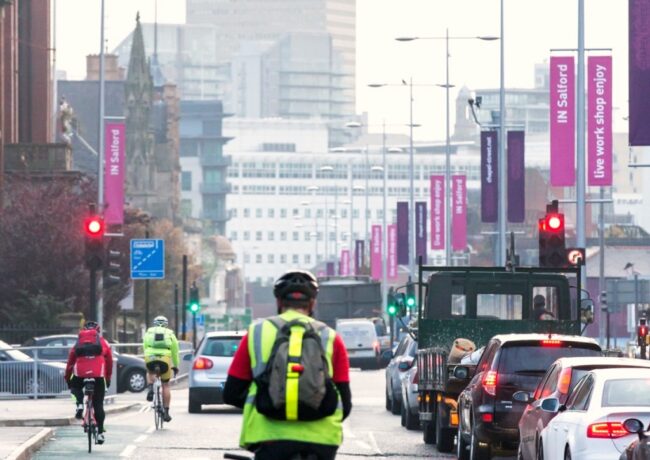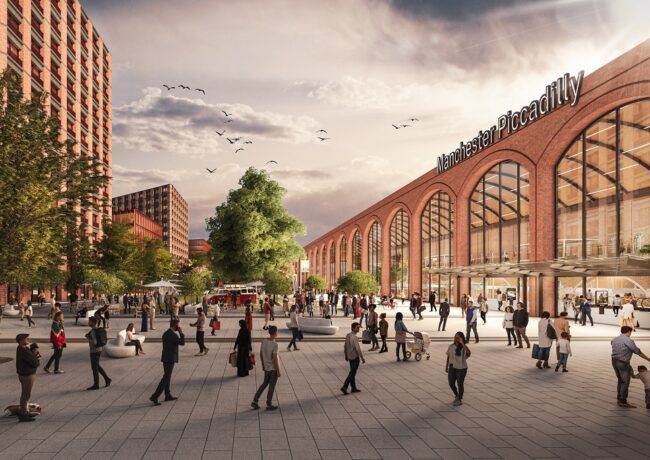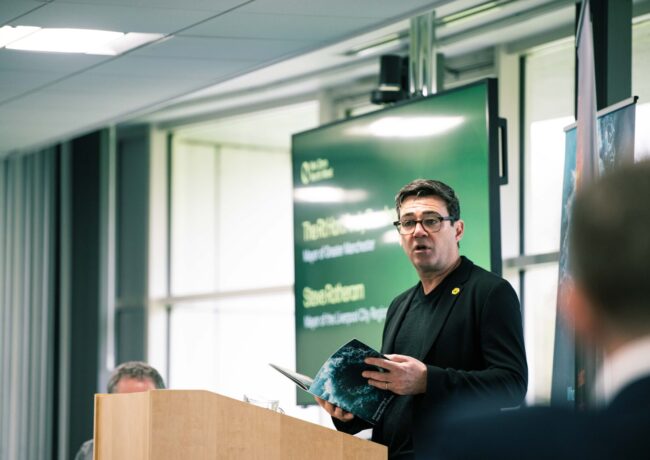New Economy crunches commuter numbers
Twenty percent of workers in Greater Manchester work from home or have no fixed base, according to a briefing paper by policy think tank the New Economy.
Below is an edited extract from Travel to work patterns in Greater Manchester, which analyses detailed data from the 2011 Census released in July and August 2014. Download full report here http://neweconomymanchester.com/stories/1764
Summary
- Greater Manchester is a relatively stable travel to work area, with 85% of GM residents also working within GM
- As in 2001, Manchester and Trafford remain the focal points as far as locations of work are concerned but Salford is growing as a GM work location
- Over the past decade more GM residents are travelling outside their local authority to work and they are travelling further when doing so
- GM has stronger labour market links to authorities in Cheshire and the High Peak than to Lancashire, Merseyside and the more distant parts of West Yorkshire
- In the face of more and longer journeys to work, commuting by car remains the most popular way of getting to work although growth in walking, cycling and public transport usage has been impressive
- Investments in GM's bus, Metrolink and train networks have come at the same time as large increases in usage but we cannot yet identify the full impact of this expansion in public transport
- GM is witnessing a breakdown in the traditional home/office split, with nearly 20% of GM workers either working from home or having no fixed office address.
In July and August 2014 the release took place of one of the most complex Census 2011 datasets – the 'flows data' of workers from place of residence (origin) to place of work (destination) and vice-versa. The Office for National Statistics initially released the travel to work flows data for local authority areas but will release more detailed data at smaller geographies over the coming months. The data is available in three separate tables: by gender, age and by mode of transport.
For each local authority area the data shows how many residents travel to work in each of the 404 (merged) local authorities in the UK. The flows data can be used to help build a picture of the travel to work catchment area for any UK authority. For most authorities the largest flow is from one location (the home) to another address (office/shop/factory etc) within the same local authority boundary (an internal flow). We will only be able to conduct detailed analysis of GM's internal flows when the flows data at lower levels of geography is released later in the year.
Where we work
In the decade to 2011 GM's population grew by 6.6% to reach 2.68m; with much of this population growth concentrated within Manchester, Trafford and Salford. Also over this period, 190,000 more GM residents became economically active.
Given this context, in 2011 there were just fewer than 1.06m people travelling to work in GM on a regular basis. Just over 900,000 (85%) of these travelling workers lived within GM, with 155,000 commuting into GM (15%). In 2001 there were 1.03m workers travelling to work in GM with 890,000 (87%) of these workers resident in GM and 138,000 commuting in (13%).
At 155,000 the number of people commuting into GM to work was 27,000 higher than the number of people (128,000) commuting out of GM – i.e. GM is a net importer of workers. In 2001 the net importing figure stood at 35,500. The reduction in the net commuting figure is explained by the increase in the number of workers with no fixed workplace.
Conclusions
The increase in the percentages of GM residents who are travelling across local authority boundaries to work, the increase in commuters from outside GM, and the increased distance of average commutes all suggest that companies in GM have access to a larger pool of labour than was the case in 2001. This is an encouraging development as companies often say that access to skilled labour is a key driver of their success; but the data also shows that GM is not as well linked to the Lancashire and Merseyside labour markets as might be expected given the size of populations in these areas.
The trends of more and longer commuting are placing extra pressure upon GM's transport infrastructure and environmental objectives. Whilst commuting by public transport has increased at a faster rate than commuting by private vehicle the use of a car to travel to work remains the default setting for 63% of workers in GM. Furthermore, the sharp decline in the number of people travelling to work as a passenger in a car suggests an increase in one person car journeys.
Measures that would be expected to reduce car usage, and hence GM's carbon footprint, include promoting car sharing, more integrated ticketing/passes so it is easier to change between trains, buses and trams, further extensions of the Metrolink network, dedicated bus lanes, and simpler and quicker 'on the day' public transport payments. These and other measures are all ready being considered or are in the pipeline – for example, the Get Me There Card initially starting on Metrolink but intended to be used across GM public transport in future. Until we have lower level (e.g. ward/postcode) data on exactly where GM workers live and work it is not possible to comment on modifications to existing bus and train routes or where new routes and service need to be provided. Reducing the cost of crossing the GM boundary by public transport should also reduce car usage amongst GM's longer distance commuters and expand GM's potential labour force.




